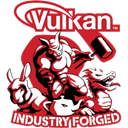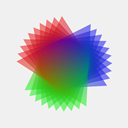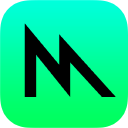Unveiling the Best PyOpenGL Alternatives for Modern Graphics Development
PyOpenGL, the Python bindings for the OpenGL API, has long been a go-to for developers looking to integrate powerful graphics into their Python applications. However, as technology evolves and new demands arise, many are seeking robust PyOpenGL alternative solutions that offer enhanced performance, broader platform support, or more modern approaches to graphics programming. Whether you're building games, scientific visualizations, or interactive applications, exploring these alternatives can unlock new possibilities for your projects.
Top PyOpenGL Alternatives
If you're ready to move beyond PyOpenGL or simply want to explore other cutting-edge graphics APIs, the following options provide compelling reasons to consider them for your next project.

Vulkan
Vulkan is a powerful, next-generation graphics and compute API that provides high-efficiency, cross-platform access to modern GPUs. As an open-source alternative available on Mac, Windows, Linux, Android, Chrome OS, Tizen OS, and SteamOS, it offers a lower-level, more explicit control over the GPU, making it a strong contender for high-performance applications where PyOpenGL might feel limited. It features support for OpenGL.

Microsoft DirectX
Microsoft DirectX is a comprehensive collection of APIs specifically designed for handling multimedia tasks, particularly game programming and video, on Windows platforms. While not open source, it's a free and widely adopted solution for Windows-centric development, making it a viable PyOpenGL alternative if your target audience is primarily Windows users and you require deep integration with the operating system's multimedia capabilities.

ModernGL
ModernGL offers a more Pythonic and less cumbersome approach to OpenGL programming, addressing some of the complexities often encountered with PyOpenGL. It's a free, open-source library available for Mac, Windows, and Linux, making it an excellent PyOpenGL alternative for developers who want to stick with Python but desire a more streamlined and modern OpenGL experience. It features strong support for OpenGL, portability, and Python integration.

GDI
GDI (Graphics Device Interface) is a core component of Windows responsible for drawing graphics and rendering text. GDI++.dll, for instance, provides enhanced font-smoothing capabilities similar to Mac OS X. While not a direct 3D graphics API like PyOpenGL, GDI is a free, open-source Windows-specific solution useful for 2D graphics and UI rendering, offering a fundamental alternative for certain visual tasks within the Windows environment.

Metal
Metal is Apple's low-overhead, high-performance graphics and compute API designed to maximize the potential of GPUs on iOS, macOS, and tvOS devices. As a commercial alternative, Metal provides near-direct access to the GPU, offering significant performance advantages for apps targeting Apple's ecosystem. If your development is primarily focused on Apple platforms, Metal is a powerful and optimized PyOpenGL alternative to consider for top-tier graphics performance.
The choice of a PyOpenGL alternative ultimately depends on your specific project requirements, target platforms, and performance needs. Each of these alternatives brings unique strengths to the table, from cross-platform high-performance APIs to platform-specific optimizations. We encourage you to explore these options further to find the best fit for your next graphics development endeavor.